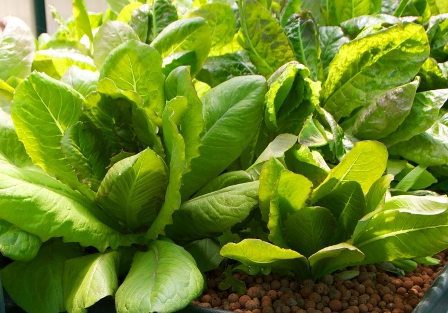The easiest type of hydroponics system for beginners is using the flood and drain technique also known as ebb and flow. For less than $200 you can build one that gives you 9 square feet of growing space and will fit on an old table or desktop. Of course, if you need to go up for your allowable space, you most certainly could construct a tiered setup with lumber that is either new or re-purposed. You could also use this system without any fish by simply replacing them in the reservoir with nutrient solution, making it a regular hydro system.
 A flood and drain system mimics what happens in a bog next to a body of water. The fish waste is filtered by the rocks, soil and plants and returns to the body of water cleaned for the fish to inhabit. This inexpensive system the guy in the video shows you how to build uses the very same principles found in nature. The grow beds on the table are actually a biological filter that become a breeding ground for beneficial bacteria that converts the ammonia in the fish waste to nitrogen that your veggies and herbs love. Once the grow beds drain, the cycle starts over.
A flood and drain system mimics what happens in a bog next to a body of water. The fish waste is filtered by the rocks, soil and plants and returns to the body of water cleaned for the fish to inhabit. This inexpensive system the guy in the video shows you how to build uses the very same principles found in nature. The grow beds on the table are actually a biological filter that become a breeding ground for beneficial bacteria that converts the ammonia in the fish waste to nitrogen that your veggies and herbs love. Once the grow beds drain, the cycle starts over.
Here you have an affordable set of plans to grow organic food that is using very green techniques and providing you with a very sustainable way of growing fresh produce year around indoors.
The flood and drain or ebb and flow aquaponics system built in this video emulates what happens in nature. We feed the fish in the totes below the desk. The fish produce ammonia that gets pumped up to the totes on the desktop. These desktop totes hold the plants and thus are appropriately called the grow bed. The hydroton and plants in the grow bed act as a biological filter and breeding ground for beneficial bacteria. The bacteria converts the ammonia to nitrates and the plants chow down. Clean fresh water returns to the fish and restarts the cycle. This creates a green and sustainable way to grow food.
Now before you add fish to your water reservoir or plants to your new grow beds, you need to get the cycle going for them. They won’t do well without a good amount of nutrition ready and waiting for them. This next video explains how to do this using the very same aquaponics setup. Below this vid you’ll find a full list of tools and materials you need to construct a new indoor gardening system just like this one. Sans the desk I’m afraid. You’ll have to improvise there. Hit garage sales and flea markets, do a little junk picking. It shouldn’t be that hard to find something that will work for next to nothing, if not totally free.
Everything he used here came from Ikea, Home Depot and eBay. If you end up buying the items he got from eBay at a regular store, it will obviously raise the total cost a bit. Still it will no doubt be a nicely affordable sum.
Tools:
- Drill
- 1 ½ inch hole saw
- Assorted drill bits
- Miter saw
Supplies:
- 2 totes 8 to 12 inch deep (Ikea $16 each)
- 6 ½ inch bulkheads (eBay $1 each)
- 2 ¾ inch PVC threaded pipe (Home Depot $6 each)
- 2 inch ABS pipe 3 feet long (Home Depot $7)
- 2 120 liter totes (Home Depot $13 each)
- ½ inch tubing 10 feet (Home Depot $4)
- ½ inch clear tubing 10 feet (Home Depot $9)
- ½ inch threaded ball valve (Home Depot $5)
- 2 ½ inch threaded to pressure fit connector (Home Depot $1)
- ½ inch reducer (Home Depot $1)
- 1400 liter per hour submersible pump (ebay $6)
- ½ inch pressure fit T-joint connector (Home Depot $1)
- 2 x 50 liters of Hydroton (Hydroponics supply $36 each)
Robert’s Total Cost? ….. $183.00